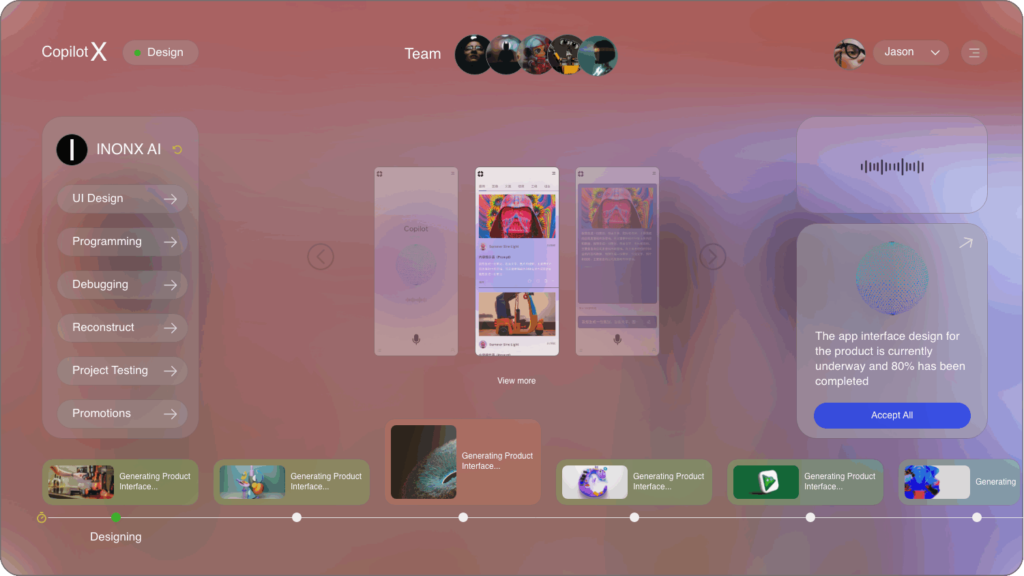The field of Artificial Intelligence has seen remarkable advancements and innovations as we head into 2024. Key players in technology continue to launch impressive AI models, tools, and products that greatly enhance functionality, efficiency, and adaptability across various industries. This article discusses the most pivotal advancements, including newly released large models such as Google’s Gemini 1.5 Pro, along with tools and APIs that revolutionize tasks in diverse sectors while addressing critical challenges like bias and specialization within AI applications.
Emerging from the hub of AI development, Google’s Gemini 1.5 Pro marks a significant leap in the realm of large language models. This sophisticated model integrates multimodal capabilities, allowing it to process both text and visual data with remarkable clarity and relevance. Its extended context understanding feature enables Gemini 1.5 Pro to grasp complex queries more efficiently, enhancing its utility in environments that demand detailed and nuanced responses. For instance, industries that involve creative content generation can leverage this model to produce engaging narratives while simultaneously evaluating visuals, thereby streamlining workflows in advertising and entertainment. According to Google Research, Gemini 1.5 Pro achieves a new benchmark in contextual understanding, outperforming its predecessors with an ability to manage requests containing dense informational layers (Source: Google Research Blog, 2024).
Moreover, the implementation of powerful tools and APIs that encompass advanced AI functionalities has become increasingly prevalent across various sectors. This development is marked by the flourishing of platforms designed to facilitate seamless integration of AI into existing workflows. Noteworthy among these is OpenAI’s latest API, which powers an array of applications from customer service chatbots to predictive analytics in finance. The API’s capability to adapt to specific business needs by tuning the underlying language model allows for enhanced personalization and relevancy in interactions, effectively addressing the diverse demands of modern enterprises (Source: OpenAI Developer Forum, 2024).
Adjustments in specialized AI technologies have also ushered in a new era of more reliable and debiased large language models (LLMs). As organizations grapple with the implications of biased AI systems, companies are investing significant resources into developing models that can identify and rectify bias in their outputs. Initiatives focusing on ethical AI emphasize creating datasets that are as representative as possible, with careful curation aimed at mitigating the risks of discrimination or misleading information propagation. Recent studies from Stanford University reveal how curated datasets, combined with sophisticated filtering algorithms, significantly minimize bias, ultimately leading to fairer model outputs (Source: Stanford AI Ethics Lab, 2024). By addressing these concerns, organizations not only enhance compliance with international regulations but also bolster consumer trust in AI applications.
In terms of tailored solutions for specific industries, innovative AI products have emerged to transform sectors such as enterprise, cybersecurity, and creative industries. For example, in the field of cybersecurity, companies are now utilizing advanced AI systems for threat detection and response management. Tools powered by machine learning patterns can analyze massive volumes of network traffic to identify anomalous behavior effectively. These systems can instantly alert security teams to potential breaches, which greatly reduces the response time to cyber threats and mitigates potential damage (Source: Cybersecurity and Infrastructure Security Agency, 2024). Such functionalities not only protect assets but also provide a competitive advantage in the increasingly complex landscape of information security.
For enterprises embracing business automation, tools that leverage AI for decision-making and operational efficiency have become invaluable. Companies are adopting AI-driven analytics platforms designed to optimize workflows, predict consumer behavior, and enhance resource allocation. One such platform, IBM Watson Orchestrate, integrates with existing enterprise systems and employs AI to streamline processes across various departments. With its interface capable of natural language query execution, business users can automate routine tasks and focus on strategic initiatives (Source: IBM Business Insights, 2024).
In the realm of education, the rise of emotional AI technologies has introduced a novel paradigm for student engagement and assessment. This technology uses algorithms to recognize emotions displayed through facial expressions and voice tone, allowing educators to tailor their approaches based on individual emotional responses. Additionally, online learning assessment tools are being enhanced with AI capabilities, enabling more accurate evaluations and personalized feedback based on student performance. These tools not only facilitate better learning outcomes but also enrich the educational experience by catering to each student’s unique needs (Source: EdTech Magazine, 2024).
As the year progresses, the implications of these advancements resonate across industries, shaping future applications and standards of AI engagement. The enhancement of multimodal models, coupled with the integration of ethical frameworks and debiased technologies, firmly positions AI as a cornerstone of innovation. Moreover, the rapid deployment of AI tools and products fosters growth by simplifying complexities and addressing tailored needs.
The impact of these innovations can be felt swiftly across diverse sectors. In healthcare, AI technologies facilitate early diagnosis and personalized treatment plans, thereby transforming patient care paradigms. Predictive analytics aid in understanding patient patterns, leading to more proactive healthcare measures (Source: Journal of Medical AI, 2024). In business automation, companies are streamlining operations and enabling smarter decision-making, which not only saves time but also improves return on investment. Furthermore, educational institutions are harnessing AI to create more inclusive and engaging learning environments that set the stage for success in an increasingly digital world.
In conclusion, the advancements in AI herald a transformative era, characterized by enhanced functionalities and innovative applications across sectors. From multimodal large models like Google’s Gemini 1.5 Pro to the ethical AI initiatives addressing bias, the landscape of 2024 appears robust with potentials that are poised to redefine not only industries but also the essence of human-machine collaboration. As we navigate this new terrain, the focus remains on leveraging AI’s capabilities responsibly, ensuring its growth serves the broader needs of society while fostering innovation and progress.
**Related Sources:**
1. **Google Research Blog.** (2024). *Gemini 1.5 Pro: Next Generation of Large Language Models*.
2. **OpenAI Developer Forum.** (2024). *Latest Features in OpenAI’s API and Their Applications*.
3. **Stanford AI Ethics Lab.** (2024). *Advances in Ethical AI: Reducing Bias through Data Curation*.
4. **Cybersecurity and Infrastructure Security Agency.** (2024). *The Role of AI in Modern Cybersecurity*.
5. **IBM Business Insights.** (2024). *Revolutionizing Enterprise Solutions with IBM Watson Orchestrate*.
6. **EdTech Magazine.** (2024). *Emotional AI in Education: Enhancing Student Experiences*.
7. **Journal of Medical AI.** (2024). *AI Innovations in Healthcare: Early Diagnosis to Patient Care*.

























